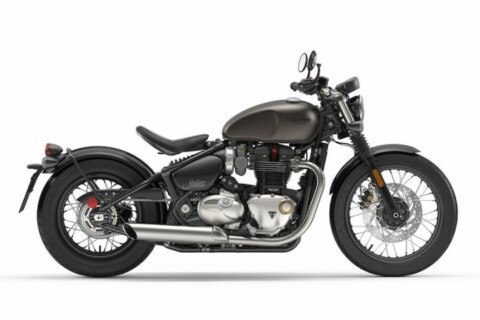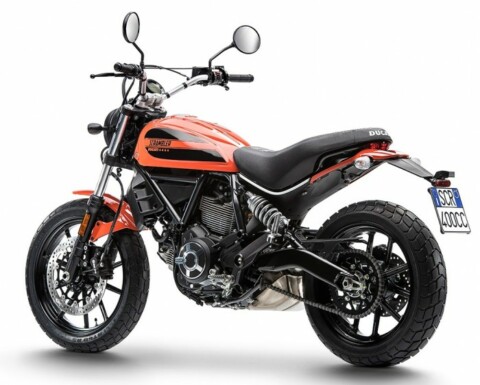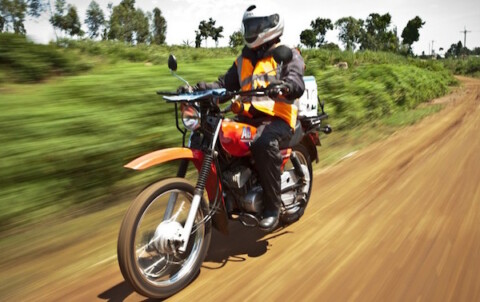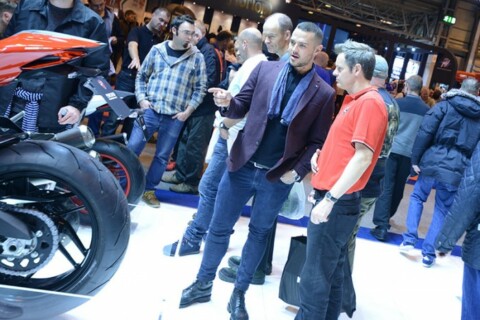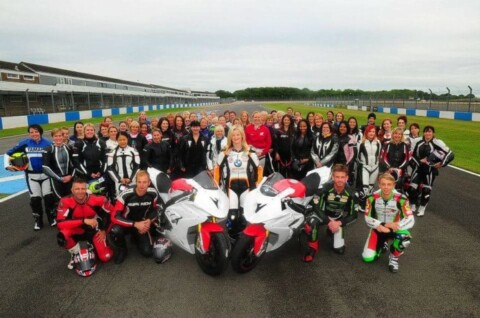Regular readers will remember that we asked you folks what you wanted to ask the man behind the new Honda Fireblade, Mr. Masatoshi Sato. Here’s what he said to your cheeky questions, as well as some more civilised ones from us…
BSN: Comparing the basic design of the new bike with the current Fireblade – is it true to say that the basic engine layout is largely unchanged? That you’ve mostly made changes around the basic design of engine and the frame?
Sato: On the engine, there are new pistons, new conrods, a new crankshaft, new cylinder head, the gears are all new. So anything that brings out the real dynamic performance of the engine is new.
And the frame – although it looks the same, it’s been thinned out to make it lighter while retaining the amount of rigidity needed to express the dynamic nature of the Fireblade. So while it looks similar it’s all new.
BSN: So the similarity in looks in some areas is deceptive?
Sato: Yes – it can be deceptive, which is why I’ve given you that full list!
BSN: The ride-by-wire throttle – is that the first time for a Honda bike?
Sato: It’s the first time on a liter sportsbike, inline-four – it was on the VFR1200 V4 and the new CBR250RR twin.
BSN: Why did it take you so long to move to ride-by-wire on the Blade?
Sato: The reason it took us this amount of time to put it on a litre class supersports bike was that, basically, what we call the ‘raw’ bike – standard no-electronics – we wanted to take that as far as we could. And a large part of that was the SP that came out a couple of years ago. And then we thought that we’d taken it as a ‘raw’ bike as far as we could. So when we started thinking abut what’s next, that’s when fly-by-wire came into the picture.
BSN: So only started using it when you thought you had to?
Sato: Yes – so where we’d taken it to with the SP we felt that if we were going to go beyond that with the raw bike, we thought that we might be getting into something which maybe wasn’t the easiest to handle. So to bring it on a level and to allow riders to have the same peace of mind they’ve always had with Fireblade, that’s why we felt that fly by wire was the way to go.
BSN: Were there any problems with moving to a ride-by-wire setup? Was it fairly straightforward?
Sato: There were quite a lot of problems in bringing it in. The original thinking of the design concept of why we brought it in, how we wanted the FBW to work, we wanted to make sure that the feeling for the rider was exactly the same kind of natural feeling that they’ll have got used to when riding a normal cable throttle. On the technical side, a lot of the electronics have a magnetic system so to get those sorts of parts small enough and positioned in the right place without disturbing any of the other electronics on the system, that was a pretty big job too – it’s pretty detailed stuff on the hardware.
BSN: Was complying with new Euro IV homologation rules difficult? A big job, or quite straightforward?
Sato: That was a big challenge as well, because with a 195kg bike, there’s not a lot to work with – there’s no spare space in it. So all the tubes, hoses, the charcoal canister, the throttle bodies, the fuel tank, they all need to be developed in a way that takes Euro IV into account. So that was a big hurdle to make sure that we did all that while achieving the weight target.
BSN: Is meeting the noise emissions or the exhaust gas emissions harder in Euro IV?
Sato: Those two elements are about as hard as each other. We wanted to get the power up and the weight down to improve the power-to-weight ratio. So that made achieving both of those things almost as hard as each other. We have the new titanium muffler as well, we wanted the bike obviously to sound great, but still be within the noise regs, so to achieve both of those was quite difficult.
BSN: When we look at the homologation changes for racing – the SP2 cylinder head changes are quite big. Were there any other parts wanted to change for racing?
Sato: The main thing we needed on the SP2 was more engine power so we concentrated on the cylinder head. But for the rest of it, because we’d changed the SP so much, we felt that for the SP2 we didn’t need to go much further.
BSN: Did you have any race teams involved in the design process?
Sato: So, the actual development team members is a completely different team from the SP2 and they have had conversations with Japanese Superbike teams.
BSN: So there were requests from JSB teams?
Sato: Yes, there were requests from the JSB team, and we also talked a lot with HRC about what’s necessary to make a winning race bike. So the HRC input was also very important.
BSN: One part on the SP that is very impressive is the titanium tank – was that a difficult thing to make? Why has no-one else done it before?
Sato: Yes – that was another very difficult part of the project. And the reason you’ve not seen it on any other bike is that actually working with it is very difficult. When you’re pressing it, it’s very easy for it to split or to wrinkle. It’s an extremely expensive process as well, I don’t think other companies would go this far.
BSN: Is there any more fire risk from a titanium tank than a steel tank in a crash – is there more chance of sparks?
Sato: Absolutely not, no. So on the standard bike it’s a steel tank – SP is titanium. But we use exactly the same die – the shape is exactly the same.
BSN reader questions
We assured Sato-san that these were the questions that the people wanted to ask…
Jonny Holmes on Twitter asked: Why do you still put them exhausts on – they ruin the bike!
Sato: So the Fireblade is all about light weight, and the previous muffler was 6kg, and we knew we couldn’t continue with that. So we saved virtually 2.8kg of weight just from the muffler alone. And although it might look as if it’s quite high, and that might make you think the bike’s centre of gravity has gone up, the bike’s centre of gravity as a whole has gone down, it’s even lower.
In our mind we might have the image of a superbike racer exhaust, but you know at some point we had to make the call on whether we’re going to have function or whether we’re going to have form. And on an SP we have to prioritise function!
Matthew Cribb on Facebook asked: Where’s the side fairing gone? And what happened to the nose?
*Sato takes us to see the bike on the stand*
So you can see compared to the previous generation how much thinner and lighter it is, so everything in terms of fairing shape and design was about making that difference. So the nose, the sidepanels, everything was about that, the fuel tank is a lot slimmer, and there’s a lot less flesh around the headlights as well.
BSN: Did you want to show the engine off more?
Sato: We would have like to have made the engine even narrower, but we haven’t actually changed the cylinder block, so we had to leave that as it is.
James Jim Stephens on Facebook asked: How will it do in WSB? Will it be competitive?
Sato: SP2 has got the potential to win!
*Huge thanks to Paul Nowers from Honda for translating from Japanese to Glaswegian and back again…


